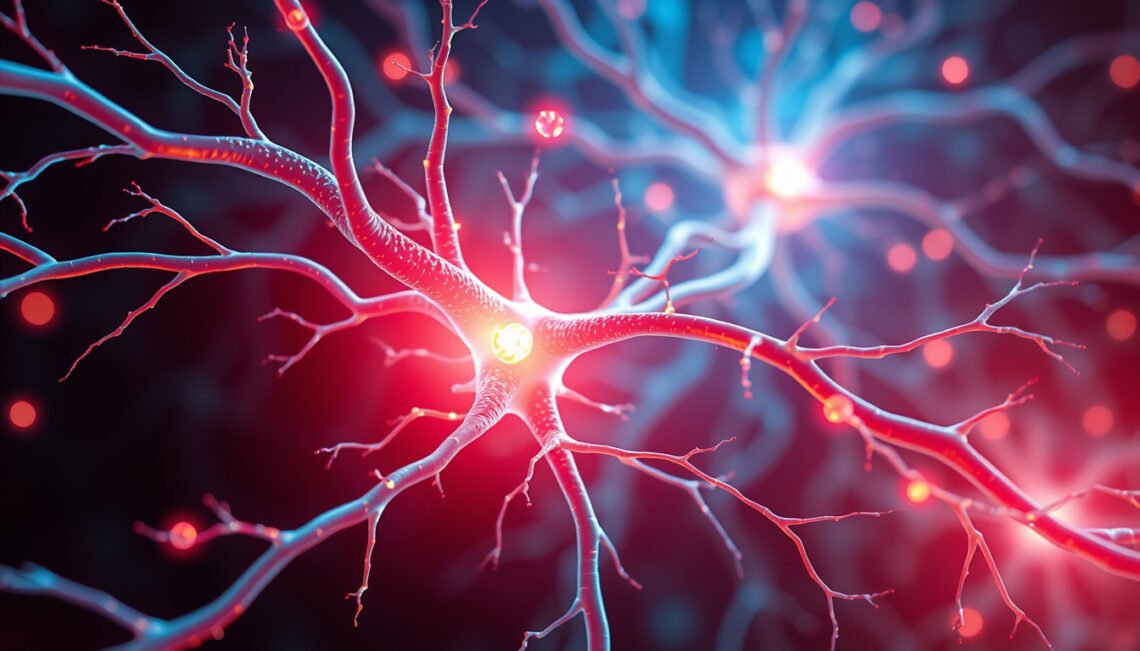If you’re experiencing persistent nerve pain, tingling, or numbness, you might be seeking ways to promote nerve healing and regeneration. Nerve healing is a complex process that requires patience, targeted interventions, and a comprehensive approach. Understanding the best strategies for nerve healing can help improve your recovery outcomes, restore nerve function, and enhance your quality of life.
In this article, we’ll explore effective strategies for nerve healing and regeneration, covering lifestyle adjustments, nutritional support, medical therapies, and alternative treatments to support your journey toward nerve recovery.
Understanding Nerve Healing and Regeneration
Nerves are essential for transmitting signals between your brain, spinal cord, and other parts of your body. When nerves are damaged, whether due to injury, compression, infections, or chronic conditions like diabetes, the body initiates a natural healing process. However, nerve regeneration can be slow and sometimes incomplete, especially for severe injuries.
The key to successful nerve healing involves reducing inflammation, supporting nerve tissue repair, and creating an optimal environment for nerve growth. While some nerve injuries recover fully over time, others require proactive measures to foster regeneration.
Lifestyle Changes to Promote Nerve Healing
-
Optimize Blood Sugar Levels
High blood sugar levels, especially in diabetics, can impede nerve healing. Maintaining blood glucose within target ranges minimizes further nerve damage and fosters recovery. -
Quit Smoking and Limit Alcohol Consumption
Smoking constricts blood vessels, reducing oxygen and nutrient flow to nerves, while excessive alcohol intake can cause nerve toxicity. Eliminating these habits enhances nerve regeneration. -
Regular Exercise
Engaging in low-impact activities like walking or swimming improves blood circulation and promotes nerve repair. Always consult with your healthcare provider before starting new exercise routines. -
Adequate Rest and Stress Reduction
Restful sleep and stress management techniques like meditation or yoga can support your body’s healing processes, including nerve regeneration.
Nutritional Support for Nerve Regeneration
Proper nutrition provides essential building blocks for nerve repair. Focus on a diet rich in:
- Vitamins B12 and B1 (Thiamine): Critical for nerve health and function. Deficiencies can lead to nerve damage. Include foods like lean meats, eggs, dairy, whole grains, and legumes.
- Omega-3 Fatty Acids: Promote nerve growth and reduce inflammation. Sources include fatty fish (salmon, mackerel), walnuts, and flaxseeds.
- Antioxidants: Combat oxidative stress that damages nerve tissue. Berries, green leafy vegetables, and nuts are excellent sources.
- Minerals such as Magnesium and Zinc: Support nerve function and repair. Incorporate nuts, seeds, leafy greens, and lean meats into your diet.
Medical and Alternative Therapies for Nerve Healing
Medical Treatments
- Physical Therapy: Tailored exercises can help maintain muscle strength and improve nerve function.
- Medications: Pain relievers, anti-inflammatory drugs, or specific nerve modulators may be prescribed by your healthcare provider.
- Electrical Nerve Stimulation: This technique can promote nerve regeneration and reduce pain.
Nerve Regeneration Supplements
- BVitamin Complex: Ensures adequate levels of B12, B1, B6, and other B vitamins.
- Alpha-Lipoic Acid: An antioxidant that has shown promise in reducing nerve pain and promoting regeneration.
- Acetyl-L-Carnitine: Supports nerve regeneration and nerve fiber repair.
Alternative and Complementary Approaches
- Acupuncture: May stimulate nerve repair and alleviate pain.
- Herbal Remedies: Such as curcumin and ginger, which have anti-inflammatory properties.
- Massage Therapy: Enhances circulation and can relieve nerve discomfort.
A Step-by-Step Approach to Nerve Healing
To maximize your nerve regeneration efforts, follow this structured approach:
- Consult a Healthcare Professional: Determine the extent of nerve damage and develop a personalized treatment plan.
- Adopt a Nerve-Friendly Diet: Emphasize nutrients essential for nerve repair.
- Implement Lifestyle Changes: Quit smoking, limit alcohol, manage stress, and stay active.
- Engage in Physical Therapy: Under professional guidance to prevent muscle atrophy and promote nerve function.
- Consider Supplements: After consulting your healthcare provider, incorporate targeted supplements.
- Explore Alternative Therapies: Such as acupuncture or herbal remedies, for additional support.
- Regular Monitoring: Track progress and adjust interventions as necessary with your healthcare team.
Common Challenges in Nerve Healing
While implementing these strategies, keep in mind common hurdles:
- Severity of Nerve Damage: Severe injuries may require surgical intervention.
- Underlying Conditions: Chronic diseases like diabetes need management for effective nerve recovery.
- Delayed Intervention: Earlier treatment correlates with better outcomes; don’t delay seeking medical advice.
FAQs About Nerve Healing
Q1: How long does nerve healing typically take?
Nerve regeneration varies depending on injury severity but usually occurs at a rate of about 1-2 millimeters per day. Mild nerve injuries may heal within weeks, while more severe damage might take months or even years.
Q2: Can nerve healing be accelerated?
While you can’t drastically speed up natural regeneration, adhering to a healthy lifestyle, proper nutrition, and following medical advice can optimize your recovery timeframe.
Q3: Are there natural ways to support nerve healing?
Yes, along with medical treatments, natural approaches like proper nutrition, supplements, acupuncture, and stress reduction techniques can support nerve regeneration effectively.
Expert Insight
According to neuroscientists, promoting nerve healing depends significantly on creating an environment conducive to nerve growth and reducing factors that impair regeneration, such as inflammation and poor circulation (source). Combining medical approaches with lifestyle modifications offers the best chance for successful nerve recovery.
Conclusion: Take Charge of Your Nerve Recovery Today
Nerve healing and regeneration can be challenging, but with a proactive and holistic approach, you can enhance your body’s natural ability to repair damaged nerves. Prioritize your health by adopting a nerve-friendly lifestyle, seeking professional guidance, and exploring supportive therapies. Remember, early intervention and consistent effort are key to achieving optimal nerve recovery.
Don’t let nerve damage hold you back—take decisive steps towards healing today, and consult your healthcare provider to tailor a plan that’s right for you. Your journey to restored nerve health starts now!






